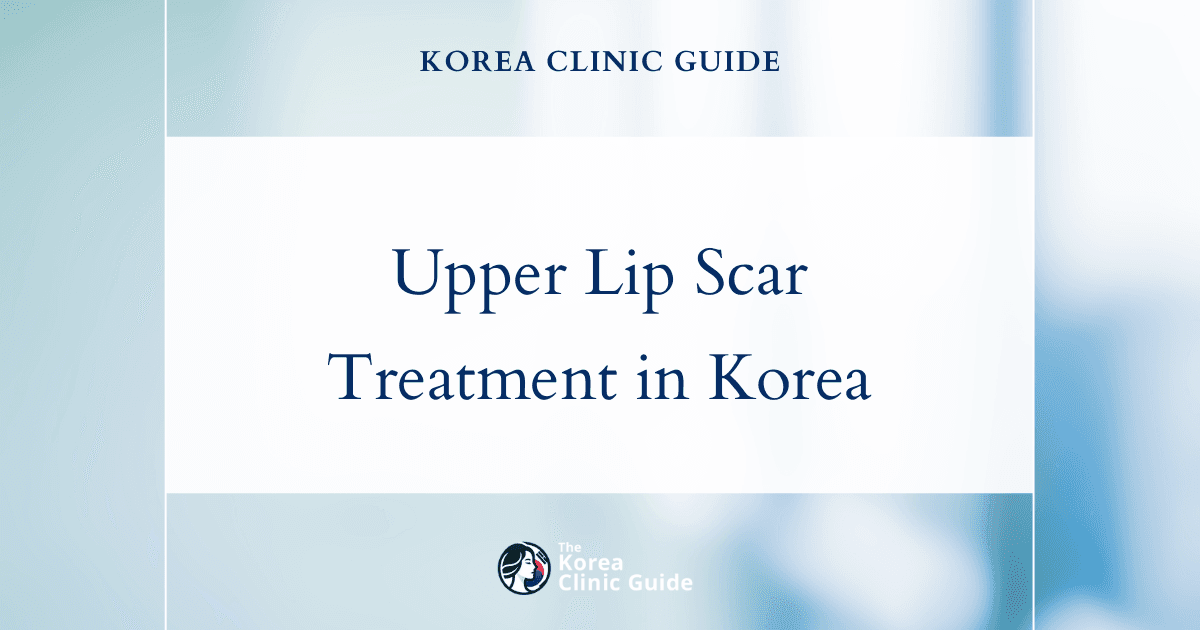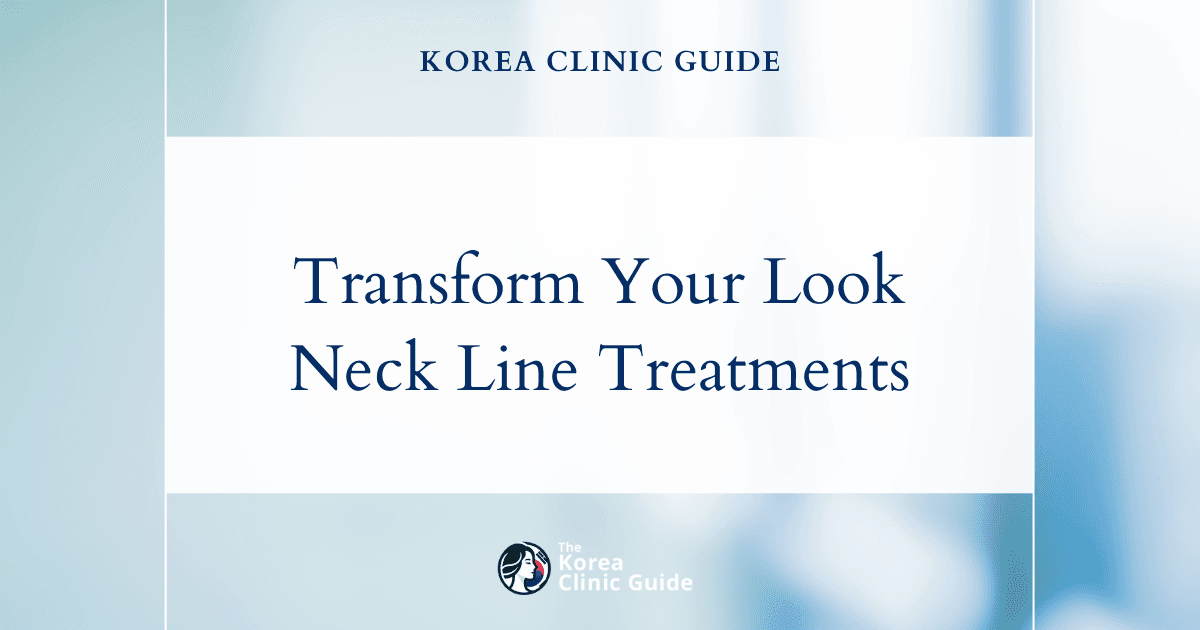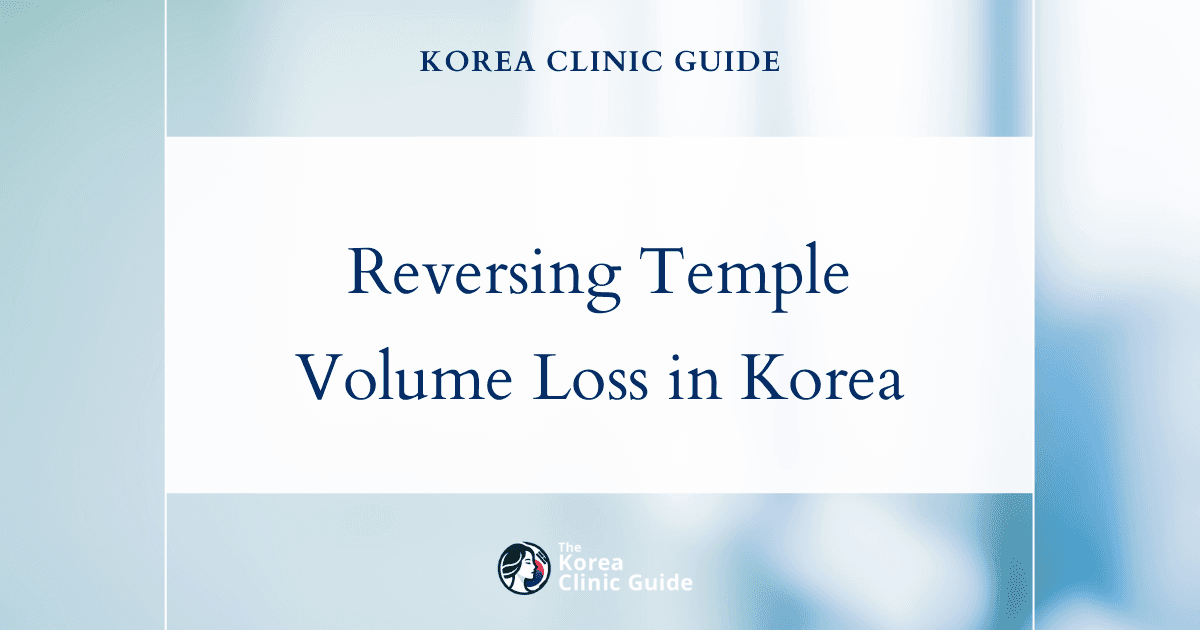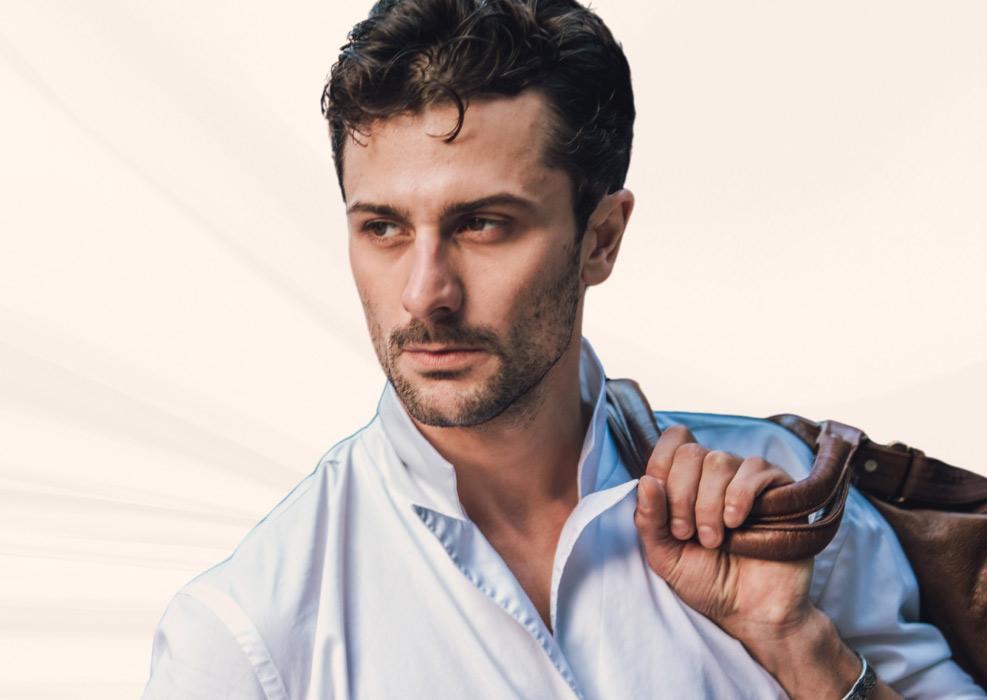Medical Tourism Blog
Effective Upper Lip Scar Treatment in Korea: Scar Removal Laser Procedures for Smooth Skin

Table of contents
- Understanding Upper Lip Scars: Definition and Common Terminology
- Medical Procedure: Scar Removal Laser
- Best Clinics in Korea for Upper Lip Scar
- Scar Removal Laser in South Korea: A Medical Tourism Perspective
- Patient Experiences and Outcomes
- Conclusions
- References
Upper lip scars, especially those on the philtrum, are more than just physical marks—they can deeply affect a person’s quality of life and mental health. While completely removing a scar is rarely possible, laser treatment offers an advanced way to greatly improve its look, texture, and color. South Korea has become a leading destination for these procedures, drawing medical tourists with its state-of-the-art technology, expert doctors, and competitive prices. For those considering laser scar revision, understanding the procedure details, following careful pre- and post-treatment care, and having realistic expectations are key to achieving satisfying results and addressing the complex challenges these visible scars present.
Understanding Upper Lip Scars: Definition and Common Terminology
What is an Upper Lip Scar?
An upper lip scar is a visible mark or skin defect on the upper lip caused by the body’s natural healing after injury, trauma, or surgery. Since the upper lip is a prominent and expressive facial feature, scars here can cause significant self-consciousness and affect social interactions and self-image. Common terms describing such skin imperfections include defect, blotch, mark, deformity, disfigurement, stain, blemish, distortion, blight, imperfection, flaw, and mar.
Focus on Philtrum Scars: Anatomy and Significance
The philtrum is the vertical groove in the center of the upper lip, running from the base of the nose down to the lip’s tubercle, bordered by two raised ridges called philtral columns. Scars in this area are especially noticeable due to their central facial location and role in facial expressions.
Common Causes of Philtrum Scars:
- Cleft Lip Repair: One of the main causes of philtrum scars is surgery to correct a cleft lip—a congenital condition where the upper lip doesn’t fully fuse during development. The surgery, called cheilorrhaphy, aims to restore function (speech, eating, breathing) and create a pleasing, symmetrical appearance. Despite surgical advances, scarring remains a major concern affecting facial aesthetics.
- Lip Lift Surgery: Cosmetic lip lifts, such as the subnasal bullhorn, central, Italian, or gullwing lifts, can also leave scars on the philtrum. These procedures aim to enhance lip shape or shorten the philtrum but may require scar revision for the best cosmetic results.
Psychosocial Impact:
Philtrum scars carry a heavy psychosocial burden. Their central, visible location means they are a constant reminder of their cause, often leading to anxiety, depression, and low self-esteem. Because the philtrum is key to facial expression and perception, improving scars here can greatly boost mental well-being, social confidence, and overall quality of life. This highlights the need for treatments that address both physical and psychological aspects of scar revision.
Common Pseudonyms and Medical Terms
In addition to general scar terms, specific medical terminology varies by scar origin and type:
- General Scar Terms: defect, blotch, mark, deformity, disfigurement, stain, blemish, distortion, blight, imperfection, flaw, mar, irregularity, pockmark, excrescence, spot, abnormality, injury, bug, malformation, weakness, excrescency, damage, taint, blot, blur, kink, impairment, misshape, glitch, defacement, failing.
- Cleft Lip Related: “Cleft lip scars” and “cheiloplasty scars” refer to surgical repair scars.
- Surgical Procedures: “Subcutaneous incisional surgery” (subcision) treats depressed scars; “philtrum shortening” is another term for lip lift surgery.
- Scar Types:
- Keloid scars: Thick, irregular scar tissue growing beyond the original wound, often red or darker, common in darker skin.
- Hypertrophic scars: Raised scars confined to the wound area, red and thick.
- Atrophic scars: Sunken scars from acne or chickenpox.
- Contractures: Scars that tighten skin, restricting movement, often after large injuries.
Medical Procedure: Scar Removal Laser
Laser scar removal uses focused light beams to improve scar tissue by stimulating new skin cells and collagen growth.
Principles of Laser Operation
LASER stands for “Light Amplification by Stimulated Emission of Radiation.” Laser light is:
- Collimated: Rays are parallel and maintain direction.
- Monochromatic: Single wavelength.
- Coherent: Light waves are in phase.
Lasers have three main parts:
- Energy Source: Provides excitation energy (e.g., flashlamp).
- Laser Medium: Determines wavelength (e.g., Nd:YAG, CO₂).
- Optical Resonator: Mirrors that amplify and direct the beam.
Mechanisms of Action and Tissue Interaction
Laser effects depend on wavelength and absorption by skin components (chromophores) like hemoglobin, melanin, and water.
The key principle is selective photothermolysis—targeting specific chromophores with precise energy to heat and damage scar tissue while sparing healthy skin.
This heating causes:
- Photothermal effects: Vaporization and collagen stimulation for resurfacing.
- Photomechanical effects: Acoustic waves fragment tissue (used in tattoo removal).
- Photochemical effects: Light triggers chemical reactions (photodynamic therapy).
- Photoelectrical effects: Ionization (rare in plastic surgery).
In scar revision, lasers create tiny tunnels in scar tissue, triggering healing and collagen remodeling, which gradually improves scar appearance.
Types of Laser Technologies for Scar Revision
- Ablative Lasers: CO₂ (10,600 nm) and Er:YAG (2,940 nm) vaporize damaged skin layers, stimulating deep collagen production. Fractional ablative lasers create microthermal zones for faster healing.
- Non-Ablative Lasers: Er:YAG, Nd:YAG (1,550 nm, 1,927 nm), and IPL heat inner skin layers without removing the surface, promoting collagen remodeling with less downtime but often needing multiple sessions. Pulsed-Dye Lasers (PDL) reduce redness by targeting blood vessels.
- Fractional Lasers: Deliver laser energy in a pixelated pattern, creating microscopic treatment zones that stimulate collagen while sparing surrounding tissue for quicker recovery.
- Halo Laser by Sciton: Combines ablative and non-ablative wavelengths in one treatment for maximal effect with minimal downtime.
- Cutera Excel V: Uses two wavelengths to target raised scar tissue and red pigmentation, reducing scar visibility.
General Procedure Steps
Laser scar removal is usually outpatient and involves:
- Preparation: Clean the treatment area.
- Anesthesia: Apply topical numbing cream; local anesthetic or sedatives may be used for larger areas.
- Protection: Use wet gauze around the scar and protective goggles.
- Laser Application: Handheld laser device delivers energy precisely over the scar.
- Cooling: Saline or water cools the area during treatment.
- Post-Procedure Care: Apply ointment and cover with dressing.
Procedure time varies: ablative resurfacing takes 30 minutes to 2 hours; non-ablative fractional treatments may require 45-60 minutes of numbing plus about 15 minutes of laser application. Mild discomfort is common.
Pre- and Post-Procedure Care
Pre-Procedure:
- Stop blood-thinning meds and supplements (aspirin, NSAIDs, garlic, ginkgo).
- Avoid glycolic acid and retinoids 2-4 weeks before.
- Avoid sun exposure and tanning.
- Refrain from other cosmetic procedures.
- Quit smoking at least two weeks prior.
- On treatment day, keep skin clean and product-free; wear loose clothing.
- Antiviral meds may be prescribed if prone to cold sores.
Post-Procedure:
- Expect redness, mild swelling, and sunburn-like stinging for hours to days.
- Recovery lasts 3-10 days depending on treatment.
- Keep skin moist with ointments; avoid drying or scabbing.
- Avoid sun exposure for 2-6 weeks; use high-SPF sunscreen and protective clothing.
- Use gentle skincare; avoid harsh products and picking at crusts.
- Manage pain/swelling with cold packs and OTC meds.
- Rest and avoid heavy lifting or strenuous activity for several days.
- Avoid makeup until redness fades.
- Avoid hydrogen peroxide, antibiotic ointments, Vitamin E, AHAs, BHAs, tretinoin, and retinoids during healing.
Risks, Complications, and Side Effects
Laser scar removal is generally safe but may cause:
Common mild reactions:
- Redness, slight swelling.
- Temporary darkening.
- Mild sunburn-like sensitivity.
- Minor oozing or bleeding.
Potential serious effects:
- Hyperpigmentation and Hypopigmentation: Darkening or lightening of skin, more common in darker skin tones; may last months or be permanent.
- Prolonged Redness: Can last 3-6 months after CO₂ laser.
- Infections and Herpes Reactivation: Risk of bacterial, fungal infections, or cold sore outbreaks.
- Scarring Risks: Rarely, new or worsened scars (hypertrophic or keloid) may develop.
- Milia and Acne: Small cysts or breakouts may appear post-treatment.
- Permanent Skin Changes: Texture or color changes may persist.
Patients must disclose medical history, including scar tendencies, bleeding disorders, infections, or recent retinoid use. Skin type affects treatment suitability and risk.
Best Clinics in Korea for Upper Lip Scar
Listed below are the best clinics in Korea for upper lip scar:
| Clinic Name | Key Features | Special Techniques |
|---|---|---|
| Club Miz Lamiche Clinic | 22 years of clinical experience, patient-centered 1:1 care, convenient Seoul location (near Jamsilsaenae & Sports Complex Stations), flexible scheduling (including evenings & Saturdays), private individual rooms, natural-looking results | 4D skin analysis for precise diagnosis, Fraxel Dual, Legato 2, specialized laser therapies for scar treatment, tailored treatment plans for upper lip scars |
| Nana Plastic Surgery Clinic | Premier Seoul clinic, multidisciplinary team, extensive surgical experience, individualized approach, trusted by local and international patients | Advanced upper lip scar revision, personalized facial harmony solutions, management of complex scar cases, cutting-edge scar revision techniques |
| Modelo clinic | Patient-focused philosophy, embraces individuality and long-term beauty, tailored treatments for Asian skin, prioritizes harmony with natural features | Comfort Thermage, thread lifting, advanced fillers and Botox, wrinkle and contour treatments, lifting and whitening procedures optimized for facial scars |
Club Miz Lamiche Clinic
Since its establishment in 2002, Club Miz Lamiche Clinic has built a reputation as one of Korea’s premier destinations for advanced aesthetic medicine, with 22 years of clinical experience guiding its philosophy of patient-centered care. Impeccably located just a 5-7 minute walk from Jamsilsaenae Station (Line 2) and Sports Complex Station (Line 9), the clinic is designed for accessibility and convenience, offering extended evening hours on Mondays, Wednesdays, and Fridays, as well as Saturday appointments. Club Miz Lamiche Clinic is dedicated to providing 1:1 tailored treatments in private, comfortable rooms, all enhanced by cutting-edge 4D skin analysis for precise diagnosis and procedure planning.
Why Club Miz Lamiche Clinic is the best choice for Upper Lip Scar treatment:
- Over 22 years of specialized clinical experience, ensuring reliability and consistent results.
- 1:1 customized treatment plans crafted to each individual’s skin type and scar characteristics, maximizing effectiveness for upper lip scars.
- Use of advanced 4D skin analysis technology, allowing for in-depth assessment and tracking of scar improvements.
- Comprehensive scar treatment portfolio, including top-tier technologies such as Fraxel Dual, Legato 2, and specialized laser therapies, all proven effective for difficult areas like the upper lip.
- Treatment performed in private individual rooms, prioritizing patient comfort, privacy, and safety.
- Flexible scheduling options, making it easy for busy clients to receive ongoing care and follow-up.
- Convenient location with easy access from major subway lines in Seoul.
- Commitment to natural-looking, noticeable results with a focus on minimizing recurrence and preserving skin health.
With its extensive expertise, holistic approach, and advanced technology, Club Miz Lamiche Clinic stands out as a leading clinic for anyone seeking the best possible results for upper lip scar treatment in Korea.
Find more about this clinic here: Club Miz Lamiche Clinic Website
Nana Plastic Surgery Clinic
Nana Plastic Surgery Clinic, ideally located at Sinnonhyeon Station, stands out as a leader in advanced aesthetic medicine in Seoul. Renowned for leveraging extensive clinical data and a breadth of surgical experience, the clinic has established itself as a trusted destination for both local and international patients seeking refined cosmetic enhancements. Nana’s multidisciplinary team is highly regarded for its precise, individualized approach throughout a comprehensive suite of services—spanning facial contouring, body sculpting, breast procedures, and specialized dermatological treatments.
For those considering treatment for upper lip scars, Nana Plastic Surgery Clinic offers state-of-the-art solutions tailored to restore both appearance and confidence. Drawing on the latest techniques and a client-focused philosophy, Nana’s surgeons provide cutting-edge scar revision procedures as part of their broader commitment to facial harmony. With a strong track record in managing complex cases and natural-looking results, patients can expect professional guidance, personalized care, and innovative options for upper lip scar improvement at one of Korea’s premier medical institutions.
Find more about this clinic here: Nana Plastic Surgery Clinic Website
Modelo clinic
At Modelo Clinic in Korea, the pursuit of beauty is not about following fleeting trends, but about honoring and enhancing your unique individuality. The clinic’s philosophy centers on achieving results that reflect your personal values, ensuring that each patient’s journey is tailored specifically to their features and long-term aspirations. Rather than conforming to a universal standard of beauty, Modelo Clinic is dedicated to embracing the distinctive characteristics that make you who you are.
For patients seeking improvement for upper lip scars and overall facial harmony, Modelo Clinic offers an array of specialized procedures, including wrinkle and contour Botox, a range of fillers for facial volume and smoothness, advanced skin lifting and whitening treatments, and state-of-the-art techniques like Comfort Thermage and thread lifting. Each of these treatments is thoughtfully optimized for Asian skin and facial structures, ensuring results that are both subtle and striking, and always in harmony with your natural beauty. With this patient-focused approach, Modelo Clinic helps individuals achieve confidence and rejuvenation that grows with them over time.
Find more about this clinic here: Modelo clinic Website
Scar Removal Laser in South Korea: A Medical Tourism Perspective

South Korea is a global leader in cosmetic and dermatological care, attracting medical tourists for laser scar removal.
Process for Medical Tourists
- Initial Consultation: A thorough evaluation by a dermatologist or surgeon assesses scar type, skin, and health. Many clinics offer English-speaking staff.
- Pre-Procedure Preparation: Patients receive instructions on sun avoidance, skincare, and medication adjustments.
- The Procedure: Topical anesthetic is applied, then laser treatment is performed precisely on the scar.
- Post-Procedure Care: Patients get detailed aftercare guidance to manage redness, swelling, and protect skin.
- Follow-Up Sessions: Multiple treatments spaced weeks apart are often needed for best results.
Costs and Comparison with Other Countries
South Korea offers advanced laser treatments at competitive prices due to high clinic competition, government support, and efficient technology use. Prices often include consultations and basic recovery care.
Cost Ranges in South Korea:
- General laser therapy: 266,000–666,000 KRW (~$200–$500) per session.
- Overall scar removal treatments: 400,000–932,000 KRW (~$300–$700) per session.
- Scar revision surgery: $1,000–$3,000.
- Laser skin resurfacing: $500–$2,000.
Factors Affecting Cost:
- Scar size and severity.
- Scar location (facial scars cost more).
- Laser type (ablative lasers cost more).
- Number of sessions.
- Provider expertise.
- Clinic location and facilities.
- Additional fees (anesthesia, hospital, follow-ups).
International Cost Comparison:
| Country | Average Price Range (USD) per Session | Notes |
|---|---|---|
| South Korea | $200 - $500 | Advanced tech, expert care, highly competitive pricing. |
| USA | $200 - $3,400 | Ablative avg. $2,509; non-ablative avg. $1,445; Halo $1,850 |
| UK | $570 - $1,200 (£450 - £950) | Full face treatments start over $2,270 (£1,800). |
| Thailand | $142 - $880 | Avg. $463; popular for affordability and quality. |
| Turkey | $395 - $1,500 (€500 - €1,500) | Avg. $510. |
| India | $360 - $720 (Rs. 30,000 - Rs. 60,000) | Full-face 4-5 sessions total $1,800 - $3,600. |
South Korea generally offers lower costs than Western countries and competitive pricing compared to other medical tourism hubs, making it an attractive option for quality laser scar treatment.
Patient Experiences and Outcomes
Laser scar removal aims to improve scar appearance significantly, though complete removal is unlikely.
Effectiveness of Laser Treatment for Upper Lip Scars
Laser therapy stimulates healing by creating microscopic tunnels in scar tissue, promoting new skin and collagen growth.
Benefits for upper lip scars, especially post-cleft lip surgery, include:
- Improved Appearance: Smoother scars, normalized color, and flattened raised areas, reflected in lower Vancouver Scar Scale scores.
- Reduced Redness and Inflammation: Pulsed-dye lasers and Cutera Excel V target blood vessels and pigmented cells.
- Less Discomfort: Decreased itching and pain.
- Better Skin Texture and Tone: Collagen stimulation leads to smoother, more even skin.
- Functional Gains: Improved movement in scars causing tightness.
Early laser intervention after surgery yields better results. Multiple sessions are usually needed, with visible improvements after the first treatment and gradual progress thereafter.
Addressing Patient Issues and Quality of Life
Upper lip scars, especially on the philtrum, affect more than looks—they impact mental health and social life, often causing anxiety, depression, and low self-esteem. Because the philtrum is central to facial expression, scars here are a constant reminder.
Laser treatment’s improvement of scar appearance helps reduce psychological distress, boost confidence, and restore facial balance. Patients often feel more comfortable socially and experience enhanced well-being. Thus, treatment benefits extend well beyond aesthetics.
Factors Influencing Effectiveness
Several factors affect laser treatment outcomes:
- Scar Type and Severity: Different scars respond differently; deeper scars may need ablative lasers, vascular scars respond well to pulsed-dye lasers.
- Scar Location: Delicate facial areas require precision.
- Patient Age: Younger skin heals faster.
- Skin Type: Darker skin has higher pigmentation risks; treatment must be tailored.
- Lifestyle: Smoking and sun exposure hinder healing.
- Skincare Adherence: Proper aftercare is essential.
- Genetics: Healing ability varies individually.
- Provider Skill: Experienced doctors achieve better results.
- Number of Treatments: Multiple sessions improve outcomes.
Conclusions
Laser scar removal is an effective way to improve upper lip scars, especially on the philtrum, by reducing visibility, enhancing texture and color, and easing discomfort. These improvements significantly boost self-esteem and quality of life due to the philtrum’s central facial role. South Korea offers a compelling option for medical tourists, combining advanced technology, expert care, and competitive pricing. Success depends on realistic expectations, strict adherence to care instructions, and thorough consultation with experienced specialists to tailor treatment and minimize risks. Multiple sessions and commitment to aftercare are often necessary for lasting, meaningful results.
References
1, 2, 3, 4, 5, 6, 7, 8, 9, 10, 11, 12, 13, 14, 15, 16, 17, 18, 19, 20, 21, 22, 23, 24, 25, 26, 27, 28, 29, 30, 31, 32, 33, 34, 35, 36, 37, 38, 39, 40















